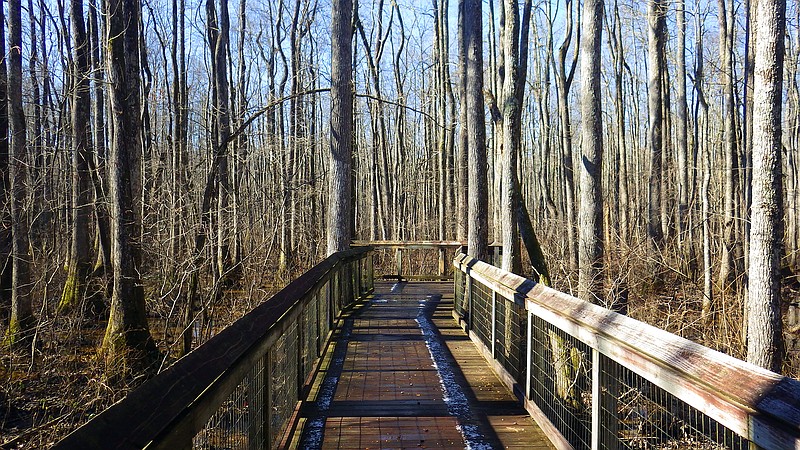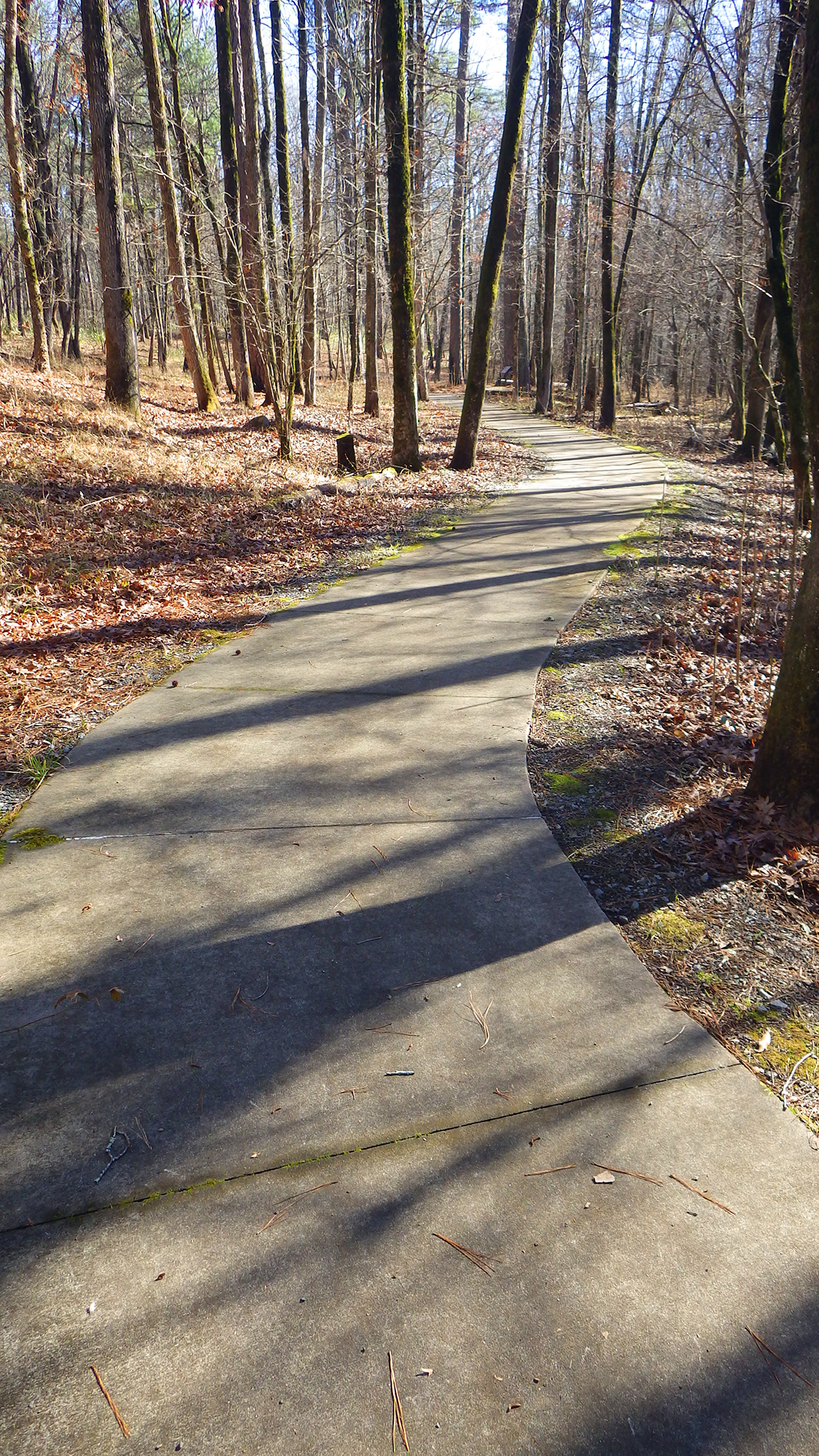Outdoor writer and photographer Corbet Deary is featured regularly in The Sentinel-Record. Today, Deary takes readers on a journey to Lorance Creek Natural Area.
Anyone who has utilized the public lands found throughout Arkansas is likely to agree that we are blessed with our fair share of opportunities to experience the wonderful outdoors.
Water lovers are privy to beautiful lakes rivers and streams while those who are more inclined to gravitate toward dry land have literally millions of acres of national forest lands at our feet. And those of us who seem to be drawn to both environments have the best of both worlds.
Various agencies, both state and federal, do a pretty good job of protecting our public lands, aquatic and terrestrial. However, Mother Nature is visited by the droves on an annual basis. And regardless of how diligent we are in preserving this state's greatest resources, our waterways and forests are not completely immune to the wear and tear of heavy usage.
Add agricultural practices, as well as recreational and residential use of private land to the equation, and pretty much all of the property throughout the state is affected in some form or fashion.
We are fortunate in the sense that Mother Nature is generally capable of withstanding heavy use, especially when Joe Public is mindful and takes steps to ensure her well-being.
However, there are ecosystems in the midst of the wonderful outdoors that are extremely fragile. They are dependent upon a very specific habitat and cannot effectively rebound following a change of environment.
Such locations have paid a heavy price throughout the years, leaving fauna and flora endangered, or at the worst, extinct. Sometimes, Mother Nature herself is responsible for causing adverse change, while at other times those of us who utilize the outdoors are the guilty party.
Video not playing? Click here https://www.youtube.com/embed/r12aQQa8p5w
Don't get me wrong. I'm not saying that any damage is done on purpose. In fact, I'm more inclined to believe that most of the adverse effects that are caused by Joe Public are done unaware.
Fortunately, there are also agencies out there that are focused predominantly on preservation. In fact, the Arkansas Heritage Commission is one such group. And as a result of its efforts, 77 natural areas are dispersed throughout the state.
So exactly what is a natural area? Well, according to the agency's website, "Natural areas are special places that protect rare natural communities and provide vital habitat for a host of plant and animal species, some of which are considered rare, threatened or endangered."
The website also states that within the system of Natural Areas are sites that "represent some of the best, and last, remaining examples of the state's original landscape."
Those who read last week's destination article might recall my plan to cover a couple of locations close to Little Rock. Well, it just so happens that one of the many natural areas throughout the state is within minutes of the state's capital. And to top it all off, a short ADA trail leads into the heart of the property. That in mind, I couldn't think of a better time to focus on this particular spot.
The Lorance Creek Natural Area came to fruition during the late 1980s and early '90s. In fact, the first section of property was purchased in 1989, as the "Arkansas Natural Heritage Commission and The Nature Conservancy worked together to acquire the open water, cypress-tupelo swamp that is bordered by a network of small streams and seeps."
The agencies were sensitive to the environment while building a parking area, a hard-surfaced foot trail and a boardwalk into the swamp. Interpretive signs were also erected along the way in effort to provide the public with the opportunity to get better acquainted with the habitat.
The natural area is relatively easy to find. In fact, one will have the pleasure of remaining on paved roads throughout the entire drive. From Hot Springs, simply take Highway 70 east for 17 miles and head east, toward Little Rock, on Interstate 30.
Travel 27 miles and take Exit 138B onto I-530 south, toward Pine Bluff. Go approximately 10 miles, take Exit 9 and turn left on Bingham Road at the intersection. Follow the road over the interstate and through a residential area prior to veering right to remain on Bingham Road at the first "Y." Veer right onto Border Lane at the second "Y" and travel in the neighborhood of 100 yards to the parking area, on the right.
From the parking area, the designated path makes its way alongside a couple of portable toilets prior to running within a stone's throw of a small pond.
Although this water source was practically dry during our most recent visit, several have been the times, during the warmer months, that I have stopped and watched reptiles and amphibians going about their everyday rituals. It was not uncommon to see frogs leap into the muddy water as any potential danger neared. And I even spent several minutes watching a water snake browse the shoreline for food during one particular visit.
The paved path eases down a slight incline through an upland pine-oak forest prior to reaching the swamps. One might find it interesting to keep a tally on the number of tree species they might find growing along this section of the designated route.
It might also prove interesting to tread slowly and quietly, as one is also apt to see native wildlife going about their rituals, as well. I have managed to see a few squirrels throughout the years. But I wouldn't be the least bit surprised to also see other species.
The trail continues a slight descent and eventually levels upon reaching a well-built boardwalk stretching out into the depths of a swamp. The scenery totally changes at this point, as the land-loving trees give way to species that are more suited for surviving in a wet environment.
One will notice several cypress trees taking root in close to the boardwalk, a couple of which tower high in the sky. Of course, cypress knees are plentiful, as well.
But it appears that the tupelos are most prominent, as they flourish in this particular environment. Our most recent visit was the first winter excursion at this particular destination, and I was somewhat surprised at the lack of waterfowl. However, I suppose any that might have been using the area could have taken flight upon our arrival.
I do recall a huge diamondback water snake sunning on a log during a previous visit. And it was by far one of the largest snakes I have ever had the pleasure of seeing on Arkansas' waters.
The boardwalk meanders through the swamp for a short distance prior to ending at a spot where one can spend some time simply soaking in the intriguing environment.
Although the 0.25-mile trail backtracks to the parking area, one is apt to notice different scenes while walking in the opposing direction. In fact, I happened upon a small colony of Devil's Walking sticks growing within a foot of the trail that I had totally missed during our initial trek to the boardwalk.
The walk back to the truck was relatively short. However, that was no indication that it lacked in opportunities to learn a little more about the environment. And I suppose I will get better acquainted during my next visit to the Lorance Creek Natural Area.

